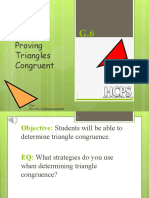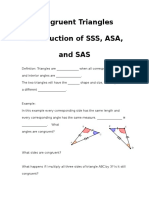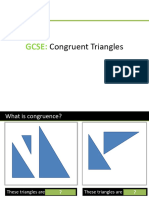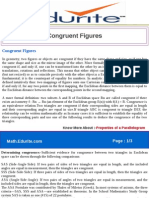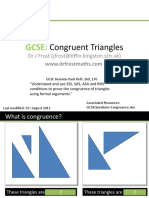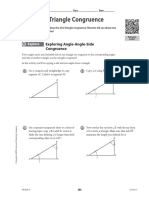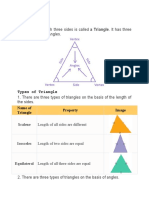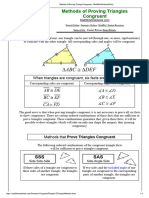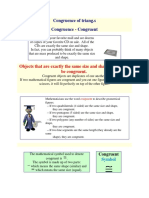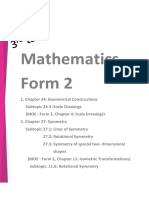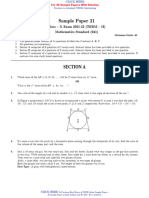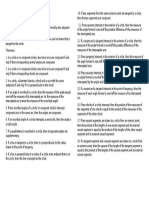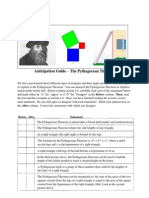0% found this document useful (0 votes)
12 views3 pagesClass 3 Notes For Geometry
This document covers triangle congruence theorems, specifically ASA, SAS, and SSS, and explains criteria that do not establish congruence, such as AAA and SSA. It includes examples and problems to illustrate how to prove triangle congruence and highlights the importance of accurate diagrams. Additionally, it provides homework assignments and resources for further assistance on the topic.
Uploaded by
29mt0001Copyright
© © All Rights Reserved
We take content rights seriously. If you suspect this is your content, claim it here.
Available Formats
Download as PDF, TXT or read online on Scribd
0% found this document useful (0 votes)
12 views3 pagesClass 3 Notes For Geometry
This document covers triangle congruence theorems, specifically ASA, SAS, and SSS, and explains criteria that do not establish congruence, such as AAA and SSA. It includes examples and problems to illustrate how to prove triangle congruence and highlights the importance of accurate diagrams. Additionally, it provides homework assignments and resources for further assistance on the topic.
Uploaded by
29mt0001Copyright
© © All Rights Reserved
We take content rights seriously. If you suspect this is your content, claim it here.
Available Formats
Download as PDF, TXT or read online on Scribd
/ 3


